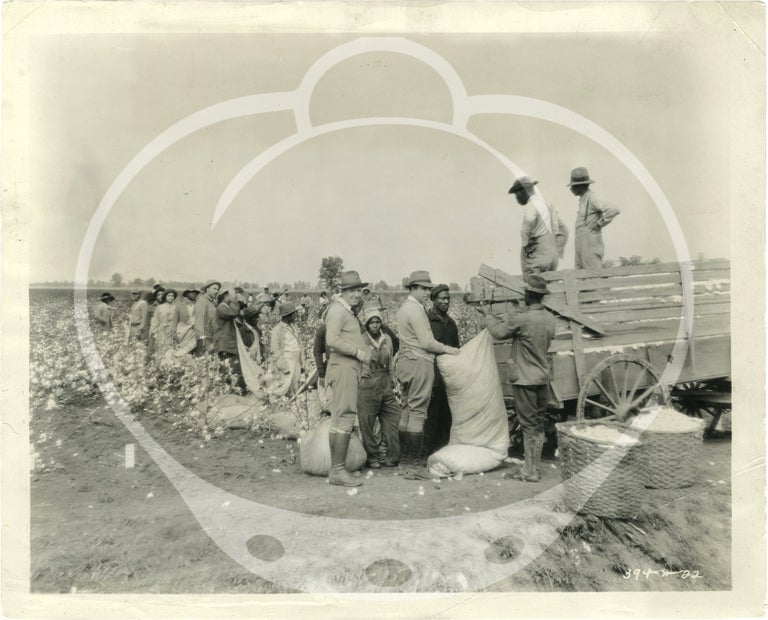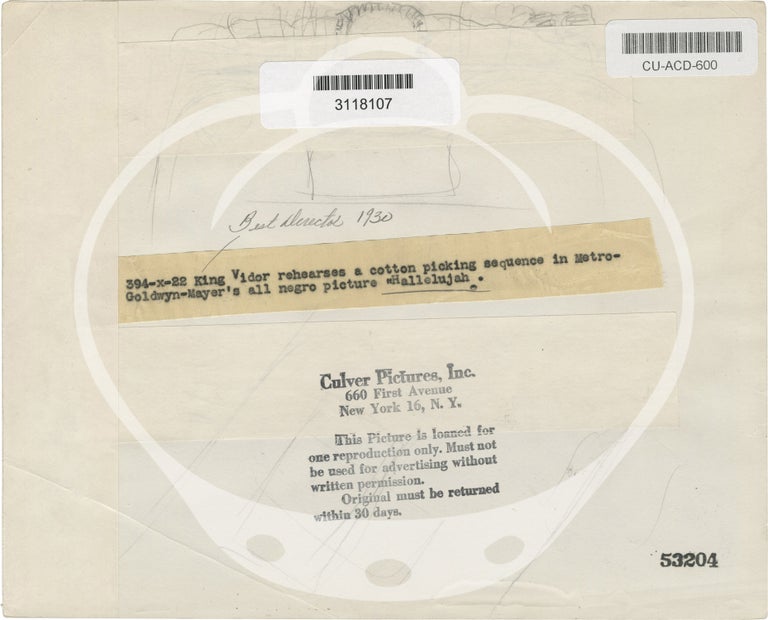Hallelujah
Beverly Hills, CA: Metro-Goldwyn-Mayer [MGM], Circa 1929. Two vintage reference photographs on the set of the 1929 film. Mimeo snipes on verso of both, one with annotations in manuscript pencil and Culver Picture stamp on verso, and one with "Menningen" and graphic stamps on verso.
The first Black musical, and one of the first all-Black films by a major Hollywood studio, with arguably more depth than its predecessor, Paul Sloane's "Hearts in Dixie," the first all-black Hollywood film released earlier the same year.
King Vidor's first talkie, written by screenwriter Wanda Tuchock, who started in the silent era and went on to become one of the first women to be credited as a director on a Hollywood film.
Although King Vidor had expressed his intent of an honest depiction of rural southern African American life, the film still clearly advanced racial stereotypes of the era. "Hallelujah" had, however, authentically represented African American spiritual music from the period, which no other film achieved.
Shot on location in Tennessee and Arkansas.
8 x 10 inches. Very Good plus, with some creasing and waviness, one with a chip in the bottom left margin, one with faint tape shadows on recto and paper tape on verso.
National Film Registry. Rosenbaum 1000.
[Book #150433]
Price: $2,250.00
![[Book #150433] Hallelujah. King Vidor, Ruth Harriet Louise, Wanda Tuchock, Nina Mae McKinney Daniel L. Haynes, William Fountaine, director, photographer, screenwriter, starring.](https://royalbooks.cdn.bibliopolis.com/pictures/150433.jpg?width=768&height=1000&fit=bounds&auto=webp&v=1604563819)

